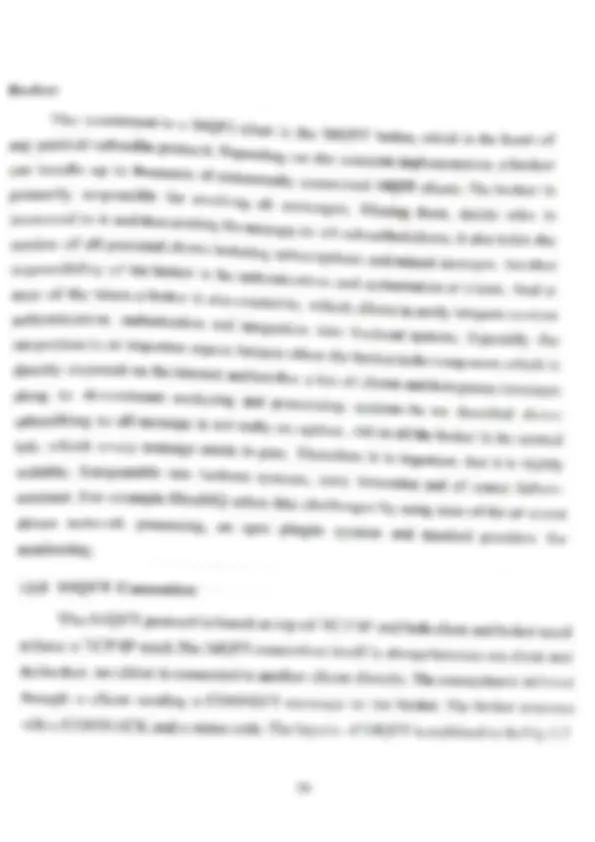Partial preview of the text
Download "Industrial Load Management System Using MQTT Protocol for Real-Time Energy Optimization " and more Thesis Industrial management in PDF only on Docsity!
There is no limit 10 the number of levels in a tapic Name or Topic Filter, other than that impased by ov erall length of a UTE-8 encoded string.Simple topic examples are: Topic = bulb, Topic = bulb2, Topic = bulb3 or Topic =bulbs/ bulb 1, Topic =bulbs/ butb2, Topic =bulbs/ bulb3 en ache = When a client publishes a message ona topic then the broker will distribute that message 10 any connected clients that have subscribed to that topic, Once the message has been sent to those clients it is removed from the brokerJf no clients have subscnbed to the tapic or they aren't currently connected then the message is removed from the broker. As we have seen MQTT decouples publisher and subscriber, so a connection Of any client is always with the broker. Before we start diving into the connection details. let's make cle ar what we mean by client and broker. Client When talking about a client it almost always means an MQTT client. This includes publisher or subscribers, both of them label an MOQTT client that is only doing publishing or subscribing. (In general a MOTT cliem can be both a publisher & subscriber at the same time). A MOTT client is any de vice froma micro controfler up to a full-fledged server that has a MQTT library Tunning and is connecting to an MQTTbroker over anykind of network. This could be a really small and resource constrained device. that is connected over a wireless network and has a Nbrary strapped to the minimum or a typical computer running a graphical MOTT client for testing purposes. basically any dev that has a TCP/IP stack and speaks MQTT over iv. The client implementation of the MOTT protocel is ven: straight-forward and really reduced 1o the essence. That's one aspect. why MOTT is ideally suitable for small devices. 35 Broker The counterpart to a MOTT client is the MOTT broker, which is the heart of any publish/subscribe protocol, Depending on 1 ie Cconerete implementation, a broker can handle up to thousands of concurrently cor inceted MQTT clients, The broker is pamarily responsible for receiving all Messages, filte and then sending the Message to session of all pe fing them, decide who is interested in it all subscribed clients, I1 also holds the rsisted clients including subser responsibility of the broker is the authentic most of the times Iptions and missed messages, Another ion and authonzation of clients. And at a broker is also Extensible. which allows to easily integrate custom authentication, authonzation and integration into backend systems. Especially the ause often the broke t and handles integration is an important aspect, bec ris the component, which is directly exposed on the interme a lot of clients and then Passes messages analyzing and Processing systems.As we described above subscribing to all Message is not really an option, along to downstream AL in all the broker is the central ry Message needs to pass. Therefore scalable, Integratable into backend systems, hub, which eve it is important, that it is highly easy tomonitor and of course failure- es this challenges by using state driven network processing, an open plugin sy resistant. For example HiveMQ solv “of-the-art event Stem and standard providers for monitoring. 41.5 MOTT Conneetion The MQTT protocot is based on top of TCP/IP and both client and broker ne ed tohave a TCP/IP stack. The \QTT connection itself is always between one client and the broker. no client is connected to another client directly. The connection is initiated through a client sending a CONNECT message to the broker. The broker response with a CONNACK and a status code. The Jayers Of MOTT is explained in the Fig.4.3 36 









